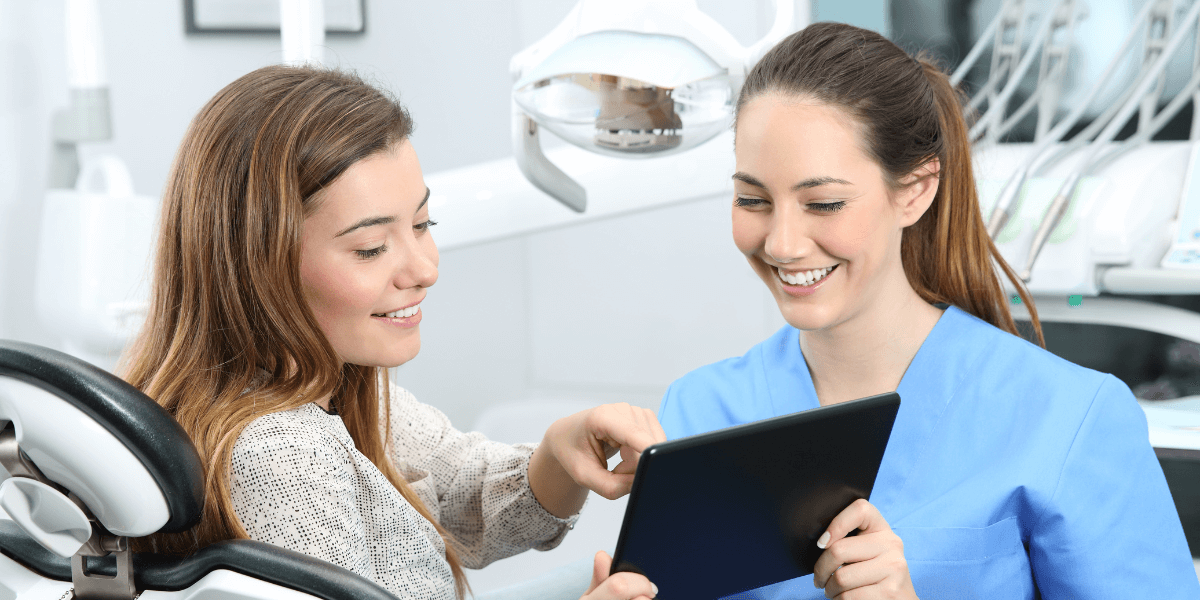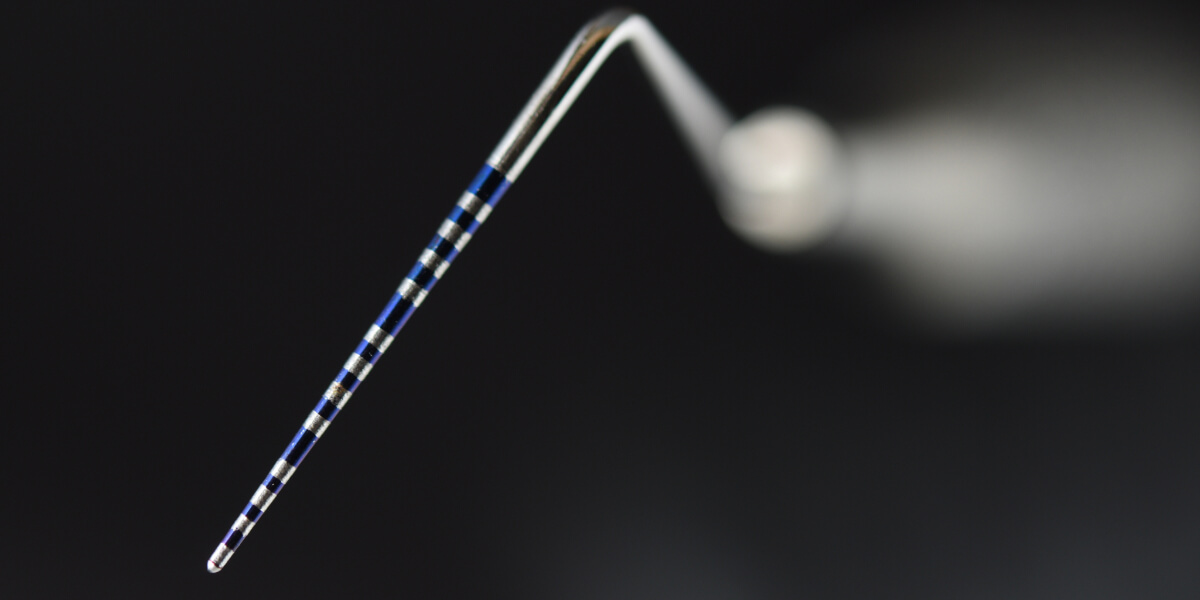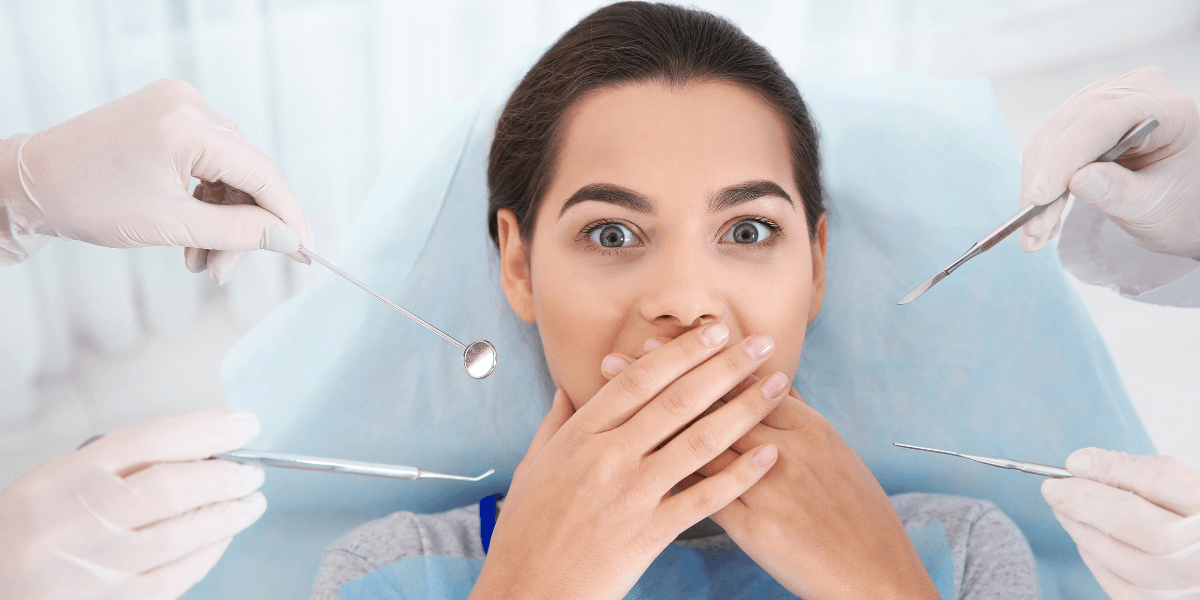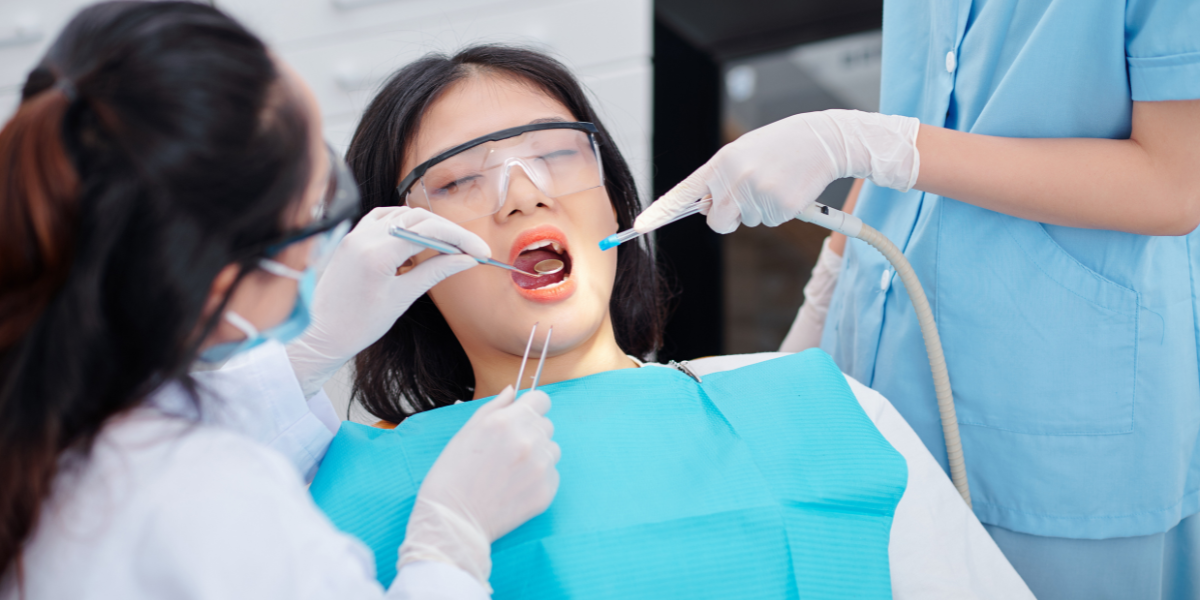
Unlocking patient compliance in dental hygiene involves understanding individual motivations, offering achievable goals, and providing tailored strategies for habit formation, such as convenience and customization. By removing shame and emphasizing reassurance and follow-up, dental professionals can empower patients to take ownership of their oral health, fostering lasting habits and a collaborative journey toward optimal dental hygiene.
Perspective
I remember as a kid/teen and even young adult before hygiene school, my hygienist would ask at every appointment if I was flossing when the answer was clearly no (well, once in a while when I was feeling fancy or got something stuck in my teeth, let’s be honest.) I knew I was supposed to floss. My mom was a dental assistant for 20 years, and we even attended hygiene school together. I was fortunate to have regular dental care since she started working in dentistry when I was a young child. For me, it wasn’t so much about knowledge as it was about habit. That seems to be true for many things in life, whether it’s exercise, nutrition, sleep hygiene, and these days – electronics/content consumption. I remember a sign hanging in one of my hygienist’s operatories that read “You Don’t Have to Floss All of Your Teeth, Only the Ones You Want to Keep.” Not even that slightly threatening sign made me floss more, though I appreciate being able to mention it to my patients all these years later. Sure, I would do better for a little while after the cleaning and then for a few days leading up to my appointment, but then I would slip back into my old habits. Ultimately I didn’t change my habits until I started learning about microbiology and the rationale for flossing and the etiology of periodontitis, which was thankfully while I was young enough to prevent damage. Also, I didn’t want to be a hypocrite as a practitioner. Those were my buttons. So now, as a practitioner, I try to offer encouragement and information in a way that’s well-received, motivational, and easily incorporated.
Patient Buttons
In hygiene school we learned the need to identify a patient’s buttons. Instead of asking my patients if they floss, I ask how often they floss as an inquiry to open up the conversation. This inquiry is presented in a non-judgmental manner. Sometimes I even say, “there’s no judgment,” ideally after establishing the patient’s trust. I try to meet my patients where they are. Sometimes they’re more or less chatty and more or less open to receiving information. I feel like I’m a chameleon at work, molding and shifting to patients’ emotional needs, and that also plays into my approach. The most common answer is, of course “not as often as I should,” which further proves that most people who go to the dentist regularly know what they “should be” doing. I’m not presenting them with new information in most cases. Though I did see a 57 y/o patient in hygiene school who had never flossed and didn’t know how, but that’s also another article. My goal is to then offer suggestions for them to incorporate this important facet of oral hygiene into their daily routine and motivate them to try it for an amount of time that allows them to see and feel a noticeable difference. That’s where real change begins. I also note that trial and error are a part of the process. Everyone is different, so finding what works may take a few attempts.
One takeaway in regard to OHI that stuck with me from hygiene school (shout out to Professor Hopkins) is that we should offer one new hygiene aid or key piece of information per visit so the patient doesn’t get overwhelmed. Here are some pointers I recommend my patients use to incorporate flossing into their routine.
- Ease. Find a floss that’s easy to use in order to establish a habit. Of course there are types and brands of floss we prefer as we see evidence of their effectiveness, but when trying to establish any new habit, it has to be something that works and isn’t too uncomfortable. I think of myself when it comes to exercise. It took some trial and error to find a regimen that aligns with what my body is capable of and something I won’t dread that’s at least somewhat enjoyable. The same goes for my kids when I’m trying to make sure they eat a balanced diet. If they dislike a certain food or preparation, I’m not going to try to keep forcing it on them after a few attempts. Humans have preferences, abilities, and varying circumstances such as schedules and responsibilities. I have my favorites that I recommend–the top of the list involves a long handle when getting started for ease. I recommend trying different textures and flavors that can make the experience more pleasant.
- Achievable. I learned this in my undergraduate health education coursework, and it can apply to any objectives we have in our life to move toward achieving our goal, oral and systemic health, in this case. I recommend patients choose an amount of time to commit to flossing every day. I typically recommend 2-3 weeks as this seems reasonable rather than initially committing to flossing every day forever, which can feel overwhelming. Twenty one days is ideal because research shows it takes that many days to change a habit.
- Reward. As we’ve learned, it can be more beneficial to floss first, however the goal here is to get it done, and visuals can be powerful. So I recommend patients brush as they normally would, and then floss in front of a mirror to see what’s been left behind. I take the time to explain that it’s also about what we don’t see, but if we can see how much is left behind, imagine what’s under the surface in the microbial world. We can offer our favorite analogies here. I like to compare that few millimeters of sulcus area to the size of a football field when it comes to microorganisms – pretty sure I got that from my first boss. I then discuss gingival bleeding and calculus as a result of not flossing. This is the homework assignment I send my patients away with.
- Customization. We all have different circumstances and abilities so I offer some flexibility when getting started. I know this helps my recovering perfectionist mind when I get overwhelmed with a new task. We know there is an ideal time to floss but any time is better than no time, when getting started. We want to set ourselves up for success so I’m not going to ask a night shift nurse to floss at night, unless it works for the individual to maybe floss on a break. There were years when I first started in private practice that flossing on my lunch break worked best for me. If a patient is more of a morning person, sometimes getting it out of the way before starting the day can work. I encourage patients to try it on and see how it goes. For me now as a mom, there have been times when I flossed with my kids to model the behavior, and times when I flossed at midnight when I finally got a moment to myself. There have been times I floss in the morning because I had a long night with the kiddos. It has shifted with the seasons of my life as we all have. Now that I’m getting older and have healthier habits in general, I stack it with my nighttime skincare and wind down routine, which is a nice way to end the day, but I realize that doesn’t work for everyone. I do recommend keeping it at the same time every day for consistency and habit-stacking, which can be very helpful. Then your body comes to expect it and it’s just something that you do, without having to put too much thought and effort into it. It’s important to find what works for us and to give ourselves grace when needed. Each human is different and that’s part of our challenge but we can give our patients ownership in finding what works for them, as they know themselves best. Empowerment, hope, and achievability are what I strive to provide. Then hopefully they come to the next appointment proud of themselves for making a healthy change.
- Convenience. My final simple tip for patients to incorporate flossing is to keep the floss accessible and within sight. That might mean leaving the floss on the counter as a visual reminder or keeping it in/on a nightstand. If it’s a floss holder, I recommend keeping it in the toothbrush holder or next to the toothbrush in the drawer. As with anything, when we make something convenient for ourselves, generally we are more likely to remember to do it.
- Relate and remove shame. I share with my patients that I wasn’t always the best flosser. I get vulnerable and tell them that I used to be them sitting in the chair saying “not as often as I should.” When I use disclosing solution, I tell them up front that this is not meant to make them feel bad, it is only a tool to help us identify areas that we may be unintentionally missing. I reassure them that it’s not always easy to incorporate a new habit at first, but once it’s established, it’s not something you have to think about. I’m trying to teach my kids this same concept, so wish me luck and let me know if you have any tips there! We have many checklists with varying degrees of motivation success, depending on the day!
- Reassurance. I conclude with reassurance that once they get used to flossing, it will become like brushing in that after a while, they will notice a difference and they will want to floss! Similar again to exercise and healthy eating. That’s where we want to get and we can get there rather quickly with some commitment/discipline. The perfect time to start? Right after their teeth cleaning when I’ve left them with the gift of a clean “slate.” I joke that they are off the hook for that day since I flossed for them, but I encourage them to think about a time of day that works for them and try to keep it consistent.
- Follow Up. Even though most of us know the things we should be doing, especially after a professional advises us to do it, it helps to have reminders and support. As hygienists, we are a crucial part of the support team when it comes to oral health. That includes following up with any specific recommendations we made at previous visits and checking in to see how it’s going in case any adjustments or different recommendations need to be made. Subsequent visits are also where we may introduce supplemental oral health aids, so as to not overwhelm the patient in that initial visit. My favorite part of dental hygiene is establishing these ongoing relationships and developing a safe space where patients know we are working together toward a common goal and they are not in it alone. We live in a busy world full of distractions so I often need to remind myself to do things until it becomes a habit, which is the goal.
One of the most rewarding parts of this profession is having the opportunity to make a positive impact in a patient’s life. I try to establish a relationship with patients and reassure them that we are a team. I joke with them that I can’t be with them to floss their teeth every day, so that is part of their assignment. I reassure them that once they notice how good it feels after consistently flossing, they will want to continue and it won’t be something they have to try to force. That they will notice a difference if they don’t floss, and that will motivate them to floss. Praise also goes a long way, so I am sure to praise any successes and encourage them that with their efforts they are “moving toward health.” Progress is progress! I remind them that I speak from experience, because we are all human, and we have more in common than we realize.





